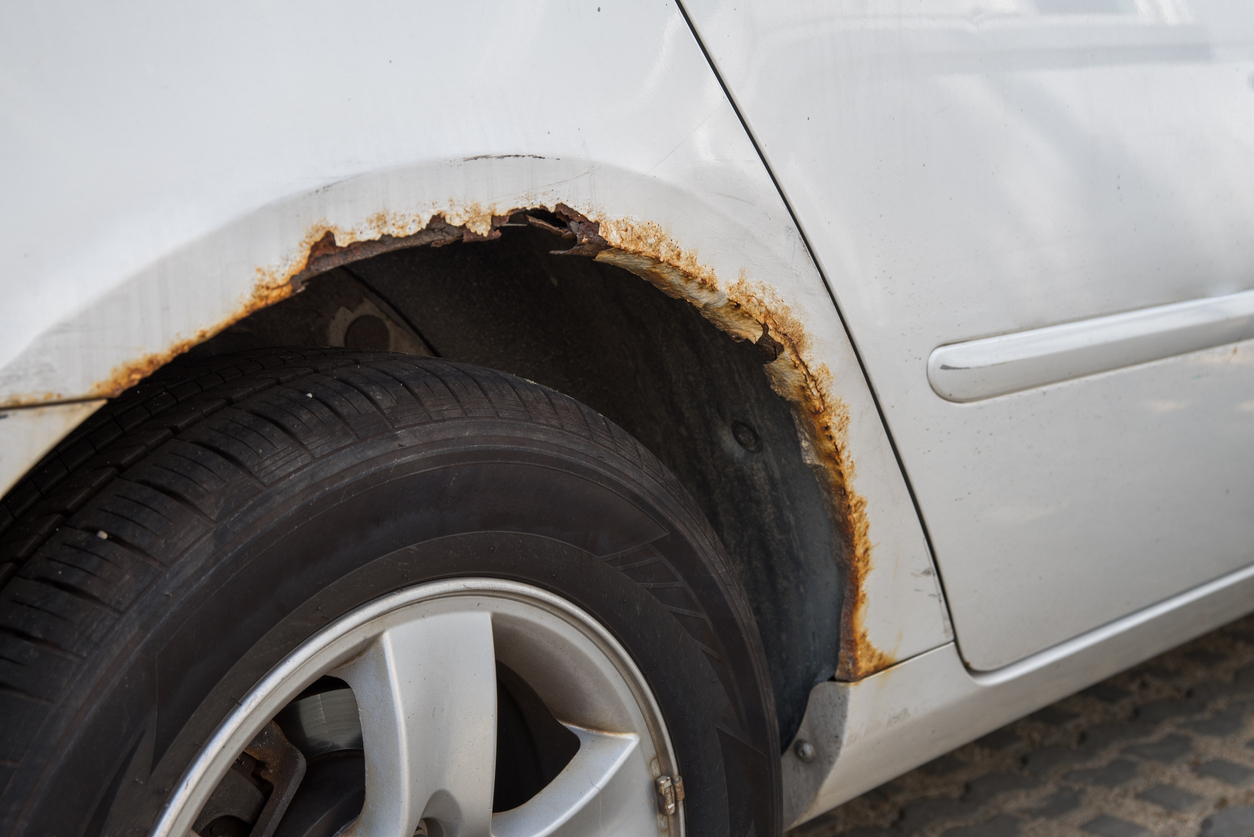
Rust on a car causing it to deteriorate
Rust (Outermost Electrons and Chemical Reactions)
Grades 9-12
You have likely seen brown crusty material appear on old cars or other objects with metal and steel components. We call this rust. Rust causes damage to cars. So, how exactly does rust form? We will explore the answer to this question in this lesson.
Teacher's Guide and Related Standards
Students will explain the chemical process of rusting and how it ends up on cars.
- What is rust?
- How and why does rust form on cars?
- What can be done to treat and remove rust from a car and other metal objects?
Motorweek Clip
- What part (material) of a car can rust?
- How can rust be prevented from spreading on a car?
- What are the methods used to repair rust on a car?
Vocabulary
Supplemental Enrichment Activities
and Designing Solutions
Balancing Iron and Oxygen Chemical Reaction Using Models
Use the laws of stoichiometry and conservation of matter in order to balance the chemical equation for rust involving iron and oxygen. First, students should review the model and write out a chemical equation to show the connections/bonds of the atoms and the final balanced products of the reaction. Students should then explain how they got their answer and why chemical reactions must always be balanced.
Identifying Properties of Iron and Oxygen
Have students analyze the periodic tables in order to identify chemical and physical properties of iron and oxygen (the main elements in rust). Further, have students explain what properties are mainly involved in iron and oxygen atoms’ willingness to react with one another in a chemical reaction.
Iron and Oxygen Outer Shell Patterns
Students should understand that iron (in steel) and oxygen react to form rust. They should also understand the pattern that elements become stable when they have eight valence electrons in their outer shell. This is why atoms share electrons with other atoms/elements in order to have a full outer shell to become stable.
Have students use the models and pattern of outer shells of electrons to identify the number of valence electrons in iron and oxygen. Discuss which atom is likely to donate electrons and which is likely to receive electrons.